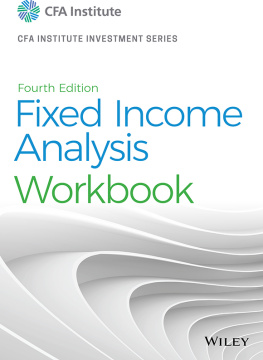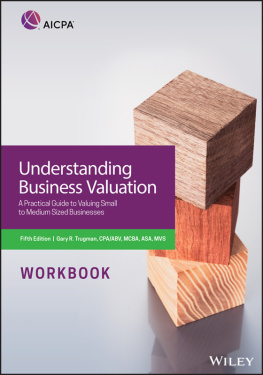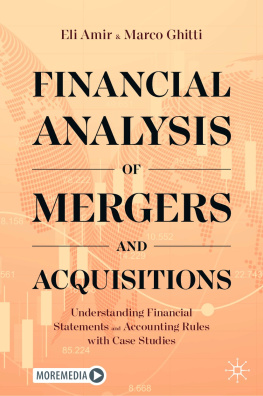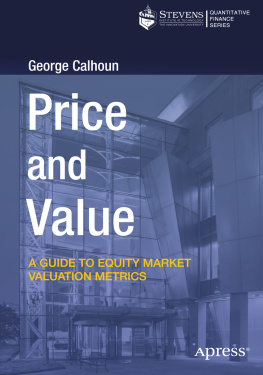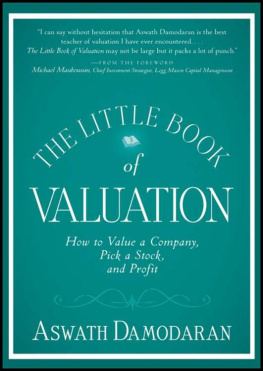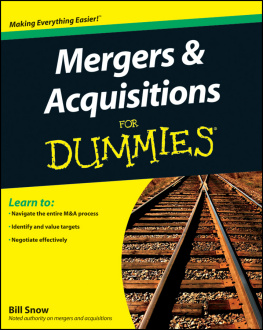About This eBook
ePUB is an open, industry-standard format for eBooks. However, support of ePUB and its many features varies across reading devices and applications. Use your device or app settings to customize the presentation to your liking. Settings that you can customize often include font, font size, single or double column, landscape or portrait mode, and figures that you can click or tap to enlarge. For additional information about the settings and features on your reading device or app, visit the device manufacturers Web site.
Many titles include programming code or configuration examples. To optimize the presentation of these elements, view the eBook in single-column, landscape mode and adjust the font size to the smallest setting. In addition to presenting code and configurations in the reflowable text format, we have included images of the code that mimic the presentation found in the print book; therefore, where the reflowable format may compromise the presentation of the code listing, you will see a Click here to view code image link. Click the link to view the print-fidelity code image. To return to the previous page viewed, click the Back button on your device or app.
Valuation for Mergers and Acquisitions
Second Edition
Barbara S. Petitt, CFA
Kenneth R. Ferris
Vice President, Publisher: Tim Moore
Associate Publisher and Director of Marketing: Amy Neidlinger
Acquisitions Editor: Russ Hall
Editorial Assistant: Pamela Boland
Operations Specialist: Jodi Kemper
Marketing Manager: Lisa Loftus
Cover Designer: Chuti Prasertsith
Managing Editor: Kristy Hart
Senior Project Editor: Lori Lyons
Copy Editor: Krista Hansing Editorial Services
Proofreader: Kathy Ruiz
Indexer: Erika Millen
Compositor: Nonie Ratcliff
Manufacturing Buyer: Dan Uhrig
2013 by Pearson Education, Inc.
Publishing as FT Press
Upper Saddle River, New Jersey 07458
This book is sold with the understanding that neither the authors nor the publisher is engaged in rendering legal, accounting, or other professional services or advice by publishing this book. Each individual situation is unique. Thus, if legal or financial advice or other expert assistance is required in a specific situation, the services of a competent professional should be sought to ensure that the situation has been evaluated carefully and appropriately. The authors and the publisher disclaim any liability, loss, or risk resulting directly or indirectly, from the use or application of any of the contents of this book.
FT Press offers excellent discounts on this book when ordered in quantity for bulk purchases or special sales. For more information, please contact U.S. Corporate and Government Sales, 1-800-382-3419, .
Company and product names mentioned herein are the trademarks or registered trademarks of their respective owners.
All rights reserved. No part of this book may be reproduced, in any form or by any means, without permission in writing from the publisher.
Printed in the United States of America
First Printing June 2013
ISBN-10: 0-13-337267-7
ISBN-13: 978-0-13-337267-0
Pearson Education LTD.
Pearson Education Australia PTY, Limited.
Pearson Education Singapore, Pte. Ltd.
Pearson Education Asia, Ltd.
Pearson Education Canada, Ltd.
Pearson Educacin de Mexico, S.A. de C.V.
Pearson EducationJapan
Pearson Education Malaysia, Pte. Ltd.
Library of Congress Control Number: 2013935801
Contents
About the Authors
Barbara S. Petitt, PhD, CFA, is Director, Curriculum Projects, EMEA at CFA Institute. She has an in-depth knowledge of equity valuation, mergers, acquisitions, and corporate restructurings. She has held academic positions at Thunderbird, School of Global Management in the U.S., Bournemouth University in the U.K., and SKEMA Business School in France, and consulted with corporate clients throughout Europe and North America. Petitt resides in Poole, U.K.
Kenneth R. Ferris, a valuation and acquisition consultant to small and mid-cap companies in Central America, served on the faculty at Northwesterns Kellogg School of Management; SMUs Cox School of Business; Thunderbird School of Global Management; Drucker School of Business at Claremont Graduate School, and Arizona States W.P. Carey School of Business. He was a director for three NYSE-listed firms. Ferris resides in Placencia, Belize.
Preface
Valuation is the essence of finance. It asks the question, What is the fair price to pay for an asset that has a set of uncertain future cash flows? This book presents a practitioner-oriented view of the fundamentals of valuation in the context of mergers and acquisitions. Valuation is considered to be an art, not a science. Thus, the reader will find that there are many rules of thumb and few inviolable principles to guide them.
The metrics used for valuing companies are not well-defined, varying according to the objectives of the valuation, the characteristics of the company and its industry, and the preferences and expertise of the individual performing the valuation. Consequently, corporate executives and valuation analysts face many choices and dilemmas as they try to assess a companys value. Throughout this book, we discuss a range of valuation methods, including multiples, discounted cash flow models, economic income models, and option pricing models. We offer practical solutions for helping the reader make informed choices and for dealing with common dilemmas. The valuation methods discussed are principally for use in non-financial companies; the topic of valuing financial companies is beyond the scope of this book.
To use this book effectively, the reader will need an understanding of the fundamentals of accounting and finance. Furthermore, a background in financial modeling with Excel is also beneficial.
Barbara S. Petitt and Kenneth R. Ferris
May 2013
Valuation: An Overview
Market View
What do Daimler-Benz, Hewlett-Packard (HP), Microsoft, Quaker Oats, and Sprint have in common? They are all multinational companies with established brands and products. But they have something else in common: They have all made bad acquisitions! In 1994, Quaker Oats acquired Snapple for $1.7 billion; it sold Snapple to an investment company for only $300 million two years later. Daimler purchased Chrysler for $36 billion in 1998; it got only $7.4 billion when it sold 80 percent of Chrysler to a private equity firm nine years later. HP, Sprint, and Microsoft also failed to make their acquisitions of Electronic Data System, Nextel Communications, and aQuantive work. These companies had to write off a significant portion of the price they paid for their targets58, 86, and 98 percent, respectively. Unfortunately, these examples are not exceptional. Bad acquisitions happen in all countries, in all industries, and during both bull and bear markets.
Acquisitions fail for different reasons, but one recurrent theme is that acquirers overpay for the target. They overestimate either the targets value, the expected synergies associated with the acquisition, or both. When the benefits of the acquisition fail to materialize, an acquirer has to write off part, and sometimes all, of the purchase price. Some companies, such as Quaker Oats and Daimler, might be able to recoup at least a small portion of the loss; others are not so fortunate and end up shuttering the business they acquired.
Do not conclude, however, that all mergers and acquisitions (M&As) are bound to fail. Some of the strongest companies as of this writing are the result of large M&As: The combinations of Exxon and Mobil in 1998, Vodafone and Mannesmann in 1999, Pfizer and Warner Lambert in 1999, and JPMorgan Chase and Bank One in 2004 created leaders in the oil and gas, telecommunication, pharmaceutical, and banking industries, respectively. Acquisitions that are well planned and well executed offer companies the opportunity to grow successfully.


